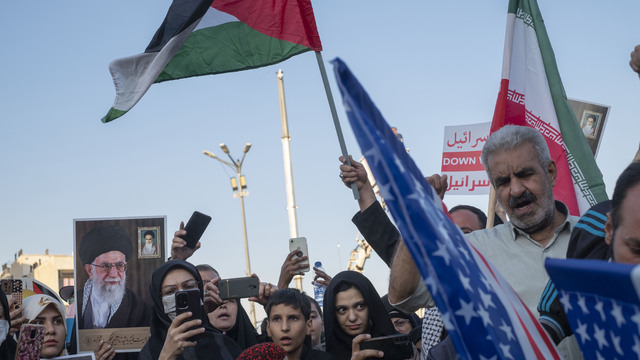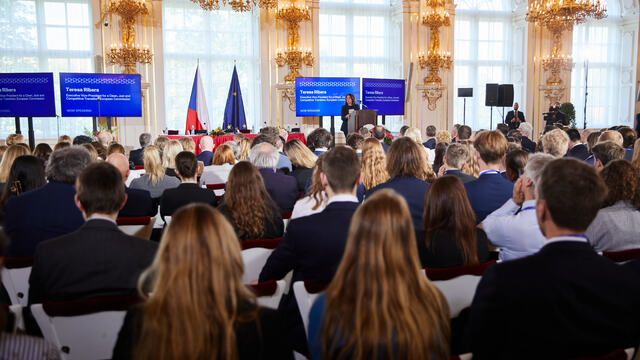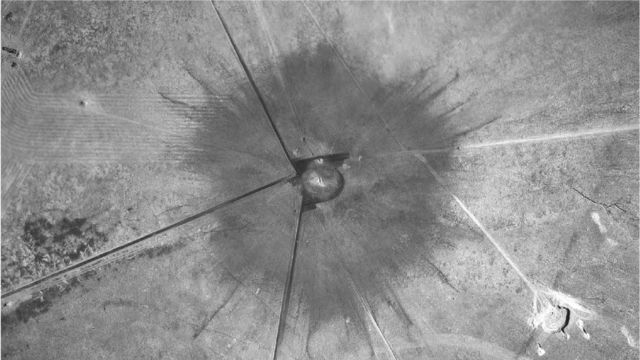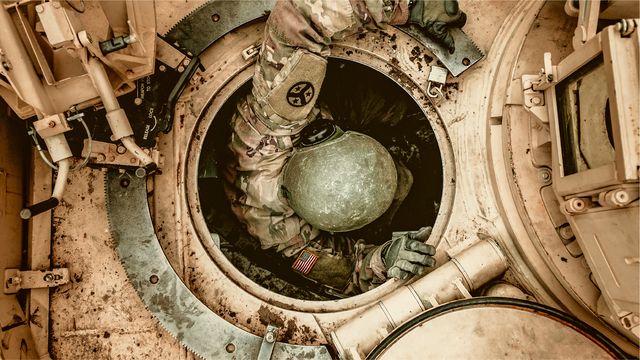Is There a Threat of a Repeated Deployment of Nuclear "Eurorockets" from the Cold War Period in Europe?
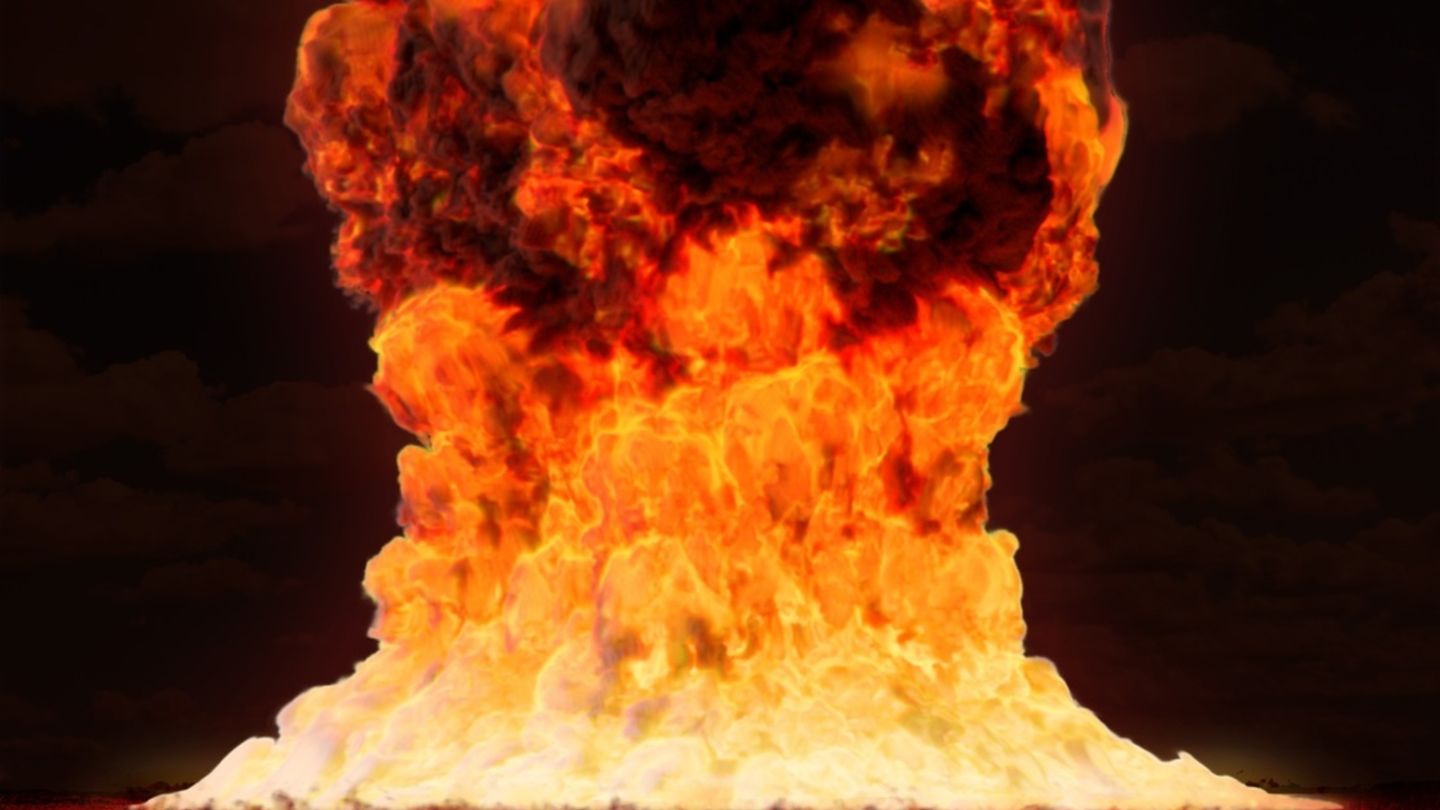
brief
This Policy Brief by Miroslav Tůma, Senior Researcher at our Institute, offers an interesting insight into a problematic topic of the nuclear threat between powerful countries and what would it mean if the American-Soviet INF Treaty was terminated.
Will the U.S. unilateral withdrawal from the American-Soviet INF Treaty of 1987 become a possible reality? The Treaty prohibits ground-launched shorter and the middle-range missiles (500–5,500 kms) with nuclear or conventional warheads. The Treaty´s security significance and its main parameters, the legal framework of the withdrawal and the reasons of both parties for accusing each other of violating the Treaty, are discussed in the article as well. In its conclusion, the article, among other things, explains the context of the possible termination of the Treaty, and its consequences for the U.S.-Russia arms-control architecture.
Motto: “ A nuclear war cannot be won and must never be fought.” (A joint statement of the American president Ronald Reagan and the Soviet highest representative Mikhail Gorbachev from their first meeting in Geneva in January 1985)
The threat of Cold War era “Eurorockets” being deployed again is not likely to become a reality in the next few months: however, in a longe-term perspective it cannot be disregarded. After the announcement of the American President Donald Trump from October 20, 2018 that he is considering the U.S. unilateral withdrawal from the American-Soviet INF Treaty from 1987 as a consequence of its violation by the Russian Federation (hereinafter the RF) and the nonparticipation of China in it, the implementation of the aforementioned intention can cause this hypothetical threat to become a security risk. After almost thirty years, shorter-range and intermediate-range ground-launched missiles with nuclear or conventional warheads could be deployed again in Europe. They would complement the current American tactical nuclear weapons (gravity bombs with nuclear warheads), which are still forward-deployed in five allied European countries (Germany, Netherlands, Italy, Belgium and Turkey), as they were since the Cold War period.
After the October visit of the US president’s national security adviser John Bolton in Moscow, which was carried out shortly after Trump’s declaration, on December 4, at the end of that day’s NATO session in Brussels, the U.S. Secretary of State Mike Pompeo announced an ultimatum addressed to Russia. It must credibly prove the untruthfulness of the accusations against it within sixty days, or the US will initiate the process of its withdrawal from the INF Treaty. This ultimatum has gained the unanimous support of all the alliance states. Thus, in the second half of 2018 the several years lasting US-Russian dispute over both sides’ alleged violation of the US-Soviet Treaty on the Elimination of Intermediate-Range and Shorter-Range Missiles (the INF Treaty) has escalated, as both parties accuse the other of such violations.
Basic parameters of the INF Treaty
The INF Treaty, whose validity has an unlimited duration, was signed in Washington on December 8, 1987 by the then highest leaders of the USA and the then Soviet Union – Ronald Reagan and Mikhail Gorbachev. After its ratification by both countries, the Treaty entered into force on June 1, 1988. It concerns the elimination of ground-launched ballistic missiles that fly along a ballistic trajectory and ground-launched cruise missiles with a flat flight path, i.e. missiles that copy the terrain. While shorter-range missiles have a range of 500-1,000 km, intermediate-range missiles fly from 1,000 km to 5,500 km. From what was mentioned above, it follows that the INF Treaty does not apply to similar missiles with nuclear or conventional warheads launched from airborne and naval carriers (surface navy vessels and submarines).
The Treaty prohibits the parties to it from manufacturing, owning or conducting flight tests of the above mentioned missiles and their launchers. Research and development of these weapons, however, is allowed. By May 28, 1991, the parties had destroyed 2,692 of those missiles, both deployed and not deployed, of which 846 were US-owned and 1,846 were in the possession of the then Soviet Union. Their launchers and the related infrastructure were also destroyed. The disposal did not concern warheads (nuclear or conventional) and control systems. The reliable verification of the elimination was facilitated by the conducting of on-site inspections at the relevant bases and facilities. Also, the Special Verification Commission (SVC) was established to oversee the fulfilment of the objectives and the implementation of the provisions of the Treaty.
The security importance of the INF Treaty
The deployment of the mentioned missiles by the United States and the then Soviet Union took place in the late 1970s and early 1980s, when the tensions in the US-Soviet relationship significantly escalated, and threatened to grow into an armed conflict. At that time, approximately 60,000 nuclear warheads with a total destructive force of 1.3 million “Hiroshima bombs” were in the arsenal of both of the main military pacts (NATO and the Warsaw Pact). (Note by the author: the atomic bomb dropped on Hiroshima had a destructive power of about 15 kilotons of TNT, and as a result of its explosion and the following dropping of the second atomic bomb on Nagasaki, approximately 200,000 people died.)
The deployment of the intermediate-range nuclear missiles, the so-called Eurorockets (for instance the Soviet SS-20 and the American Pershing-2 and land-based cruise missiles), which dangerously lowered the threshold of nuclear weapons use in the densely populated European territory, at the same time led to mass protests in both parts of the then divided world. These protests often reached numbers of participants as high as several hundred thousand; this was the case, for example, in the UK, the then German Federal Republic, the Netherlands, Belgium, the Scandinavian countries, etc. A particularly significant cause of concern was the fact given the predetermined military purpose of the nuclear weapons and the related short period for making decisions about whether they would be launched, the sole responsibility for their use could be transferred from the political component to the military one.
The length of the other party’s decision-making process for its retaliatory response to the first party’s launch of these missiles was reduced to about 10 minutes; in contrast in cases of launches of intercontinental missiles the expecting length of the corresponding decision-making process was about 30 minutes. For that reason, the then Soviet Union allegedly built a system of autonomous retaliation launching of nuclear missiles on the territory of the USA, in case of the destruction of the Soviet command system as a result of the first nuclear strike. This involves the initiation of a launching system, the so-called “dead hand” launch mechanism, in which missiles are launched with the help of a computer and “artificial intelligence”. This system probably is not activated in peacetime, but the RF is likely to continue to rely on it in crisis situation.
The main significance of the INF Treaty, particularly in view of the potential European theater of war, is that it has a nuclear-disarmament character because it put one whole category of nuclear weapons out of action even though it only applied to ground-launched missiles with low-yield nuclear warheads. Its negotiation was also a significant step towards improving the relations between the West and the East, which resulted, especially after Mikhail Gorbachev’s election as the leader of the then Soviet Union, in the end of the Cold War in the early 1990s.
American and Russian accusatory arguments
According to the US intelligence services statement in the report titled the National Intelligence Estimate (NIE) from 2015, the Russian Federation reportedly began testing forbidden ground-launched missiles ten years ago. The US informed the Russian Federation of this fact in 2013, and then it informed the North Atlantic Alliance about it in 2015. In March 2017, the Deputy Chairman of the US Chiefs of Staff Gen. Paul Selva confirmed the deployment of prohibited missiles by the Russian side. More specifically, the United States and NATO are currently accusing the Russian Federation of testing and deploying 9M729 mobile missiles (which are also known as SSC-8 or SSC-X-8 missiles in the NATO terminology). The RF also allegedly modified the Calibre sea-launched intermediate-range missile and combined it with the Iskander ground mobile launching device system for short-range missiles (which can fly up to 500 km), which are not prohibited by the Treaty.
Although Russia has to a certain extent succeeded in lowering the Alliance’s superiority to it in terms of conventional forces over the past decade, there is still an existing imbalance between them and it is often referred to as a possible reason for Russia’s breach of the Treaty. The severity of the American allegations can be demonstrated by among other things, the threat of the US ambassador to NATO Kay Bailey Hutchison (a former Texas state senator) at a press conference in Brussels in early October. She said that in the event of the deployment of the mentioned missiles at the Russian base Kapustin Jar in the southwestern part of Russia, the US was prepared to take stringent counter-measures against the base. (Note by the author: several hours later, the ambassador corrected her exaggerated statement on her Twitter page by writing that she was not referring to a military preemptive strike but to other measures at the diplomatic level.)
According to some arms-control experts, another reason for the Russian violation of the INF Treaty could be the possession of intermediate-range and shorter-range missiles by other nuclear countries (India, Pakistan, the PRC and Israel) that have friendly relations with the RF, but are not limited by the INF Treaty’s obligations. There are long-standing concerns that these weapons could be added to the nuclear arsenals of other countries, and they are expressed not only by the RF, but also by the United States. These fears are indicated by the Joint US-Russian Declaration issued in October 2007 at the 62nd UN General Assembly. In the Declaration both countries expressed their support for the INF Treaty and stressed its importance for reducing the international tension, especially in Europe. However, they also made a proposal to some non specified countries, in which they called on them to relinquish these weapons, terminate the related programs and open negotiations on the possibility of their global ban. The initiative, however, did not receive a positive response in the coming years.
The Russians deny the American allegations against Russia on the grounds of a lack of the evidence and argue that this issue should be dealt with at the level of military experts within the above mentioned bilateral Special Verification Commission, which is specially designed to assess controversial issues in the Treaty’s implementation. In turn the RF leaders accuse the US of failing to meet its obligations as a result of its use of prohibited missiles as part of the building of the NATO anti-missile defence in Europe (European Phased Adaptive Approach, EPAA) near the Russian border. Its construction is officially justified by the threat posed by the missiles of Iran and the DPRK. In Romania, the anti-missile base of the Aegis Ashore system (the ground version of the Aegis naval system) was completed in 2016, and the other one in Poland is expected to be completed in 2020. Within the system there are allegedly plans to deploy Mk-41 launchers of the Aegis naval system. In the navy version, this launcher had a multipurpose character. For example, it could launch interceptor missiles but it could also launch other weapons, including Tomahawk intermediate-range cruise missiles. If the multipurpose character of the launcher were retained in the Aegis Ashore ground version, it would be relatively easy for the declared defence system to become an offensive one. Russia also has reservations about prohibited missiles being used as targets in tests of the SM-3 interceptor missiles of the above-mentioned anti-missile defence. Another Russian allegation relates to the US use of unmanned aerial vehicles (drones), which can also be included in the treaty ban, even though these cannot be considered as missiles. The Americans reject Russian accusations as unjustified.
Opponents of the US intention to withdraw from the Treaty
The Russian side, according to a statement by President Putin stood firmly in favor of maintaining the Treaty. Some Russian politicians also label Trump’s statement as a form of extortion directed against Russia. Obviously, they are basing their claims on what the US Defense Secretary James Mattis said in February 2018 in connection with the release of the Nuclear Posture Review 2018. According to this statement, the US could eventually drop the plan for the deployment of an intermediate-range sea-launched cruise missile with a nuclear warhead under the condition that the RF will not continue to test and introduce prohibited missiles.
The Chinese Ministry of Foreign Affairs also took a negative attitude towards the possibility of the termination of the INF Treaty. However, it has not expressed any opinion in regard to the possible involvement of the country in any possible multilateral negotiation of a new INF Treaty.
On October 22, 2018, the EU High Representative for Foreign Affairs and Security Policy Federica Mogherini issued, through her spokeswoman a statement, in which she, inter alia, called on the United States to consider the consequences of the withdrawal from the perspective of US security, its allies in the Alliance and the whole world. In relation to the alleged violation of the INF Treaty by Russia, the statement called on the Russian leadership to address “serious concerns regarding its compliance with the INF Treaty in a substantial and transparent way”. The statement also emphasized that the treaty “contributed to the end of the cold war and constitutes a pillar of European security architecture”. In defining the importance of the Treaty for the European security, the statement also points to the impact of the termination of the INF Treaty on increases in global instability.
The German Foreign Minister Heiko Masse and various German politicians have spoken out against the termination of the INF Treaty as well. They stressed, in particular, the importance of the Treaty for European security and expressed their concerns about the possibility of a new phase of the nuclear arms race.
A group of nuclear experts from the US, the RF and Germany known as the Deep Cuts Commission also issued a statement warning of the dangerous consequences of the termination of the Treaty. In the statement they especially stressed the risk of a new arms race, nuclear escalation and further disruption of the political relations between the US, the RF and Europe.
On December 6, 2018, in response to Pompeo’s ultimatum the former Soviet President Mikhail Gorbachev and the former US Secretary of State George P. Shultz issued a joint statement that was published in the US newspaper The Washington Post. Both politicians, from the position of participants in the negotiation of the INF Treaty, inter alia expressed their view, that “abandoning the INF treaty would be a step toward a new arms race, undermining strategic stability and increasing the threat of miscalculation or technical failure leading to an immensely destructive war”. In the statement, they also recommended “the creation of an informal forum of US and Russian experts to address the changes in the security landscape that have occurred over the past – including missile defenses, precision conventional weapons, space systems, cyberthreats and the nuclear weapons of other countries”. At the same time, they called on the US and the RF “to resume progress on a path toward the eventual elimination of nuclear weapons. The alternative, which is unacceptable alternative is the continuing threat to our very existence.”
Some arms-control experts also warn that the US withdrawal will have wider implications for the US-Russian relations, with an emphasis on the bilateral arms control, the US and the Alliance’s security, NATO cohesiveness, and the co-operation with partner countries in Asia.
The legal framework of the treaty withdrawal
Any withdrawal from the INF Treaty is governed by its Article XV. In addition to its provision stipulating the unlimited duration of the Treaty, it provides that the main reason for the withdrawal by the given party must be that “extraordinary events related to the subject matter of this Treaty have jeopardized its supreme interests”. The article also states, as a term for withdrawal, that “it shall give notice of its decision to withdraw to the other Party six month prior to withdrawal from this Treaty”, while simultaneously providing a statement of the extraordinary events jeopardizing its supreme interests.
The US Constitution, in Article II, Section 2, clearly sets out the powers of the President and the Senate in relation to the ratification of international treaties. A ratification of an international treaty can happen only with the advice and consent of the Senate and the Senate’s subsequent approval of the presidential ratification with a two-thirds vote. However, in relation to a US withdrawal from an international treaty, such a constitutional unambiguity is lacking. However, a longstanding practice, which is supported, inter alia, by the US Supreme Court’s past statements in cases where the country resigned from bilateral international treaties, allows the US President to unilater- ally withdraw from an international treaty without the involvement of the Senate. The US withdrawal from the 1972 US-Soviet Anti-Ballistic Missile Treaty (ABM; also known as the Treaty on the Limitation of Anti-Ballistic Missile Systems) by the Republican administration of George W. Bush in 2002 can be seen as an example of this. In case of a unilateral withdrawal from a bilateral treaty, the given treaty will be permanently terminated.
According to the Article 60 of the Vienna Convention on the Law of Treaties, which codifies the international customary law in this field, a party claiming a gross breach of a treaty by another party has two options: either to terminate the treaty or to completely or possible partially suspend its operation though in this case, the bilateral treaty would still remain in force. Although the United States is not a party to the Vienna Convention, these rules still apply to it because of their customary nature.
Conclusions and other anticipated developments
The US administration’s statement in regard to the INF Treaty has to be seen in connection with the content and main focus of the main US security documents released at the end of last year and early this year. These are the US National Security Strategy, the US National Defense Strategy 2018, and in particular the Nuclear Posture Review 2018. In these documents Russia and China are labeled as the main US rivals and as revisionist powers that pursue a gradual erosion of the US military domination and the reduction of the primary role of the United States in the world order in support of their vision of the multipolar world concept. As part of the strengthening of the deterrent concept with the goal to prevent this development, the key role in the mentioned security documents is attached to nuclear weapons. The planned measures to improve their quality and the little interest in limiting them due to the arms-control framework, as well as President Trump’s comments on this issue, can be seen as proof of the US effort to achieve nuclear supremacy. In relation to Russia, this trend violates the previously declared interest in maintaining the nuclear strategic balance.
In the Nuclear Posture Review 2018 (hereinafter the 2018 NPR), published on February 2, 2018, Russia is accused of having an interest in carrying out the first low yield nuclear strike in the regional European theater of war in the context of a so-called limited nuclear war to gain an advantage in a situation made acute by a crisis. Another allegation relates to the alleged Russian INF Treaty violation. The document gives the alleged violation as a justification of the necessity to modify, within a short time period, the allegedly low number of current nuclear warheads so that submarine-launched ballistic missiles would have a still unspecified low-yield nuclear capacity and to initiate the development of a nuclear-armed sea-launched cruise missile that could also be used in case of a limited nuclear conflict of a regional nature. This is also related to the planned research and development of the intermediate-range ground-launched cruise missile with a conventional warhead.
According to Alexei Arbatov, the head of the Russian Center for International Security at Primakov’s National Research Institute of World Economy and International Relations in Moscow, the concept of a “limited nuclear war” was rejected by the North Atlantic Alliance in the 1970s and 1980s as too dangerous, and this concept was never part of the Soviet nuclear doctrine. Kingston A. Reif, the director for the disarmament and threat reduction policy of the US non-governmental Arms Control Association, stressed, among other things, that no country should be prepared to wage a “limited nuclear war” because there is no guarantee that it will not develop into an all-out international conflict of boundless catastrophic consequences.
The ultimative character of the US requirement addressed to Russia, and presented by the Secretary of State Mike Pompeo, the fulfillment of which the US side could initially hardly see as a realistic possibility may be described as an attempt of the US to achieve the termination of the Treaty. However, given the unpredictability of the Trump administration’s various decisions, it can not be ruled out that the US-Russian summit that could take place at the beginning of 2019, which is still in the time frame of the aforementioned deadline, could eventually lead to a compromise solution that would not result in an immediate termination of the INF Treaty.
In this context, long-term efforts of American neoconservative politicians and supporters of the military industrial complex and their influence on the US policy of opting out from arms-control treaties which are supposedly not in the security interests of the US, will also play an important role. The US withdrawal from the INF Treaty has long been actively supported by President Trump’s national security advisor John Bolton, who has been labeled as a neoconservative and hawkish politician by his critics. In the Republican Administration of George W. Bush its neoconservatives members particularly Donald Rumsfeld, had a strong influence on the US withdrawal from the US-Soviet Anti-Ballistic Missile Treaty of 1972, also known as the ABM Treaty. This treaty ensured the existence of the concept of the so-called “mutually assured destruction” because it made it impossible for both parties to carry out the first nuclear strike.
In addition to the above-mentioned the US unilateral withdrawal from the ABM Treaty and the considered possible termination of the INF Treaty, there is a danger that in February 2021 the US will refuse to extend the US-Russian New START Treaty for another five years. If this were to happen an enormous amount of nuclear weapons owned by the US and the RF will not be restricted by any arms-control treaty for the first time since 1972. This act has the potential to open the path to a new nuclear arms race that would be similar to the well-known nuclear arms race from the Cold War period when there were no bilateral arms control restrictions. At the same time, there is an increased risk of the proliferation of these weapons among other states and the possibility of their eventual launching them as a result of a wrong evaluation of the given security situation, technical or human failures and/or cyber-attacks. Apparently, there will also be a growing interest on the part of terrorists in obtaining radioactive materials for the production of so-called dirty radiological weapons, which are combinations of conventional explosives with radioactive material.
However, in connection with the above mentioned breaches of the Treaty, the US side, while considering the growing tension in the US-Chinese trade and security relations, is also beginning to stress its concern about the fact that the mentioned missiles are also owned by the PRC, and the PRC is not limited by any treaty in this respect. These Chinese weapons are allegedly threatening the US military bases in Japan (Okinawa) and on the Pacific island of Guam, as well as some Asian and Pacific partner countries of the United States, especially Japan, the Philippines and Australia.
In case of an official announcement by the USA of the withdrawal from the INF Treaty and the beginning of a six-month period for its termination, the US will face the choice of whether to attempt to deploy so-called Eurorockets in the European space, thus instigating a similar process on the Russian side, or not to deploy the aforementioned missiles. A similar dilemma will be related to the deployment of these weapons in Asia and the Pacific area. To the detriment of the deployment option, there is little likelihood of a friendly offer by some of the European Alliance countries to build a base for the aforementioned missiles and the associated risk of a disruption of the Alliance’s cohesion, given the prevailing averse attitude of most allied states regarding this matter. Another possibility is that the United States will begin to develop and test these categories of missiles without their deployment in the European space. Any possible deployment of these missiles in the Asian area, in response to the shorter-range and intermediate-range Chinese missiles, will face the similar problem of obtaining the consent of some countries that might possibly keep them on their respective territories such as the Philippines, Japan, or Australia.
Another obstacle for the development and the deployment of the aforementioned nuclear weapons may be the US Congress with its new composition and the Democratic Party’s majority in the House of Representatives as a result of the recent midterm November elections.
From the point of view of nuclear arms-control efforts, the most optimal way of solving the problem would be a possible joint US-Russian initiative leading to negotiations of a multilateral treaty banning the aforementioned missiles while the existing bilateral INF Treaty would be temporarily preserved. In particular, all nuclear countries which possess the mentioned nuclear weapon should also take part in the negotiations. Thus, apart from the US and Russia, the negotiating countries should also include the PRC, India, Pakistan, the DPRK and Israel. (Note by the author: In case of a demand to also include in these talks the non-nuclear countries that possess the aforementioned missiles the negotiations would also include Iran, Saudi Arabia, Taiwan and the South Korea.) However, this option would be difficult to realize, given the specific reasons for nuclear deterrence in the countries concerned. One of the major obstacles for the participation of nuclear states possessing several tens or hundreds of these weapons, compared with the thousands of nuclear weapons possessed by Russia and the US could be this significant disparity and a possible demand for its removal.
Dear readers, let me conclude by expressing my personal view. The world finds itself in a situation where humanity should strive for its survival, and all states should take quick and effective actions because the Earth is increasingly confronted with the negative consequences of global warming, which is caused by irresponsible human activity. There are also other global problems, such as poverty, water scarcity, lack of health care, lack of education, etc. At the same time, however, we are witnessing possible resumption of the nuclear arms race, which is accompanied by the ineffective spending of enormous financial and material resources that could be used more effectively. Everyone should decide for him- or herself how urgent each of the world’s current priorities actually is.




